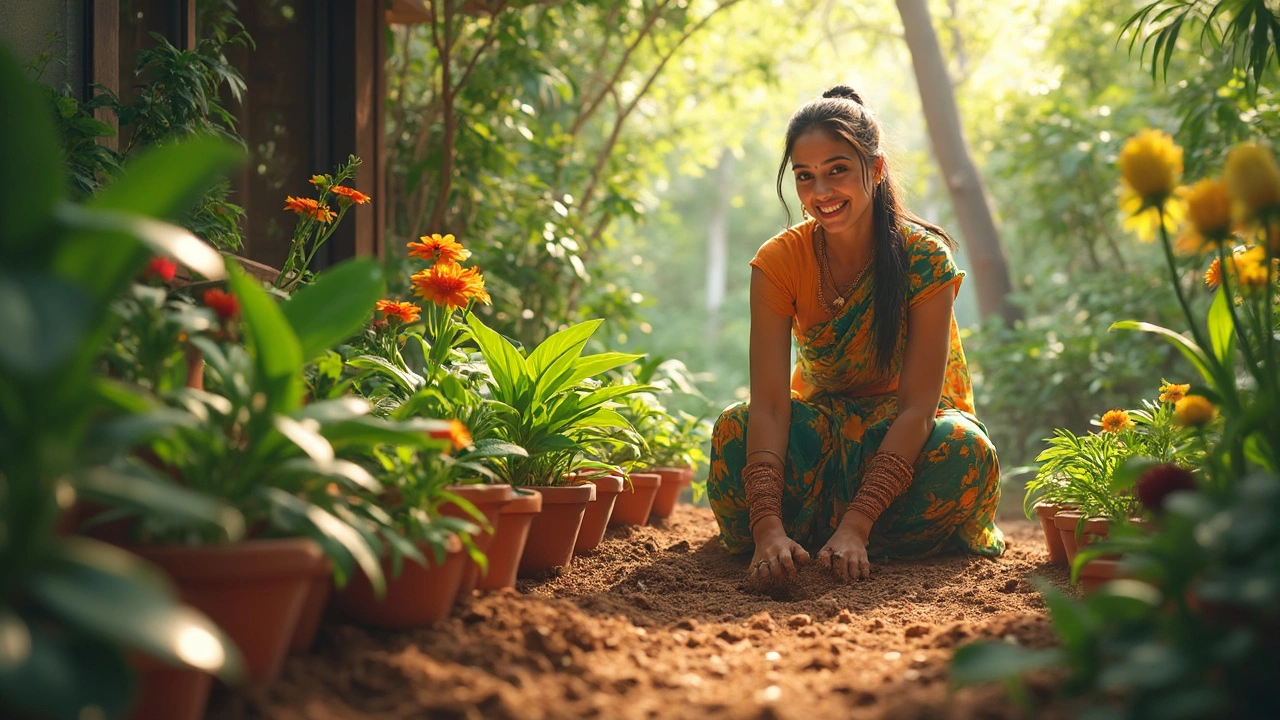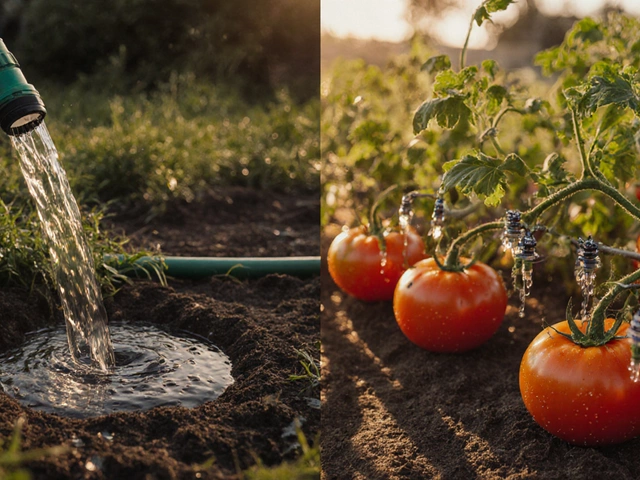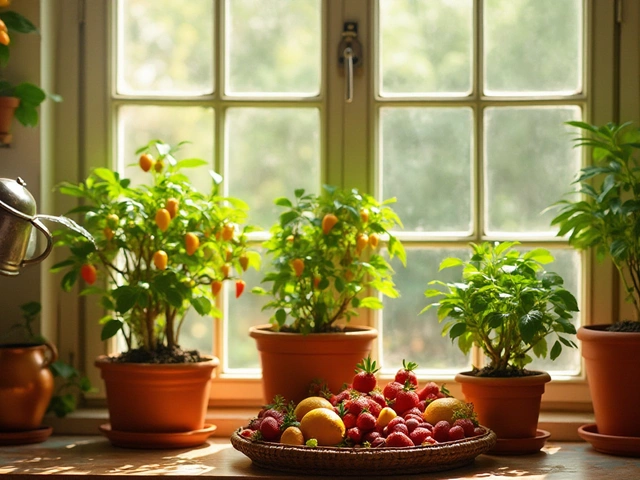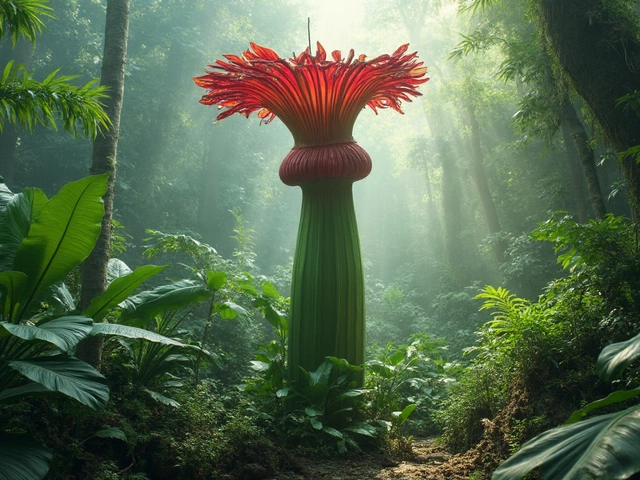Hey there, garden enthusiasts! So, you're probably familiar with perlite, right? Those little white bits mixed into potting soil that look kinda like popcorn? They're great for making sure your soil doesn’t turn into a swamp after a watering. But did you know there are plenty of natural alternatives to perlite that you might even have lying around at home?
One alternative is ordinary sand. Yep, the same stuff from the beach or sandbox can help keep your soil loose and airy. It’s a simple option but super effective, especially if you’re dealing with heavier or clay-heavy soils.
Meanwhile, if sustainable gardening is your thing, take a look at rice hulls. These little guys are fantastic at retaining moisture and are a byproduct of rice production, making them an eco-friendly choice. Plus, they break down over time, adding organic matter to the soil.
- Why Look Beyond Perlite?
- The Benefits of Using Natural Materials
- Sand: A Simple Swap
- Rice Hulls for Retaining Moisture
- The Versatility of Pine Fines
- Tips for Mixing Natural Alternatives
Why Look Beyond Perlite?
Alright, let’s chat about perlite for a sec. Sure, it’s a go-to for many gardeners, but have you ever thought about why we might want to explore other options? There are a few eyebrow-raising reasons that might get you thinking.
Firstly, perlite is essentially a volcanic glass that's mined and heated until it pops like popcorn. While it’s great for soil drainage and aeration, the mining process can be pretty disruptive to the environment. Sustainable gardening is all about working with what nature gives you and causing as little harm as possible, right?
Moreover, perlite can be tough on the wallet over time. Those bags might not seem too pricey upfront, but costs can add up, especially if you’ve got a big garden or numerous plants to cater to.
Let’s not forget availability. If you’ve ever found yourself halfway through a gardening project and realized you’re out of perlite, you know what a buzzkill that can be. Natural alternatives, on the other hand, like sand or rice hulls, are often much easier to find locally.
By trying out other natural materials, you’re not just being kinder to the planet; you’re also discovering solutions that may suit your soil or plant needs even better than perlite. Plus, there's a little thrill of mixing things up and experimenting in the garden!
The Benefits of Using Natural Materials
Switching to natural alternatives for improving your garden’s soil can make a big difference not just for your plants, but also for the environment. Why? Because natural materials often come from renewable sources and can be more eco-friendly than the industrial process used to produce perlite.
First up, many natural materials add organic content to the soil as they break down, which can boost soil fertility over time. This means healthier plants without the need for extra fertilizers. Plus, they often come with the added benefit of being more locally sourced, reducing your garden's carbon footprint.
Using materials like rice hulls or coconut coir helps in moisture retention too. Unlike perlite, which can sometimes cause water to drain too quickly, these options can hold on to water and slowly release it as needed. This is especially handy during those scorching summer days when your plants are more likely to dry out.
And let's not forget about cost. While perlite can be a bit pricey depending on where you are, many natural alternatives can be sourced for cheap or even free. For example, sawdust or wood chips are often waste products that sawmills would gladly get rid of, so why not give them new life in your garden?
Understanding these benefits shifts us toward a more eco-friendly gardening mindset. You can play your part in making gardening not just a solitary hobby, but a community-friendly and sustainable action. These alternatives make gardening more accessible and affordable, too!
Sand: A Simple Swap
So, you've decided it's time to ditch the perlite for something more natural, and you're eyeing sand. Good choice! Sand is not only easy to find but also does a solid job at improving soil structure. When mixed into your gardening soil, it keeps things nice and loose, which is just what plant roots love for breathing and growing.
Here’s a cool fact: using sand in soil isn’t exactly groundbreaking (pun intended). According to the horticulturist Joe Lamp’l,
"Sand can be a real game-changer for gardeners dealing with soil that's a bit too sticky and compact."Who would've thought something as simple as sand could be so useful?
Now, if you're wondering how to actually use sand in your garden, it's pretty straightforward. First, you need to make sure you're using coarse sand, like builder’s sand, rather than fine versions like play sand. The coarse type won't compact easily, ensuring proper drainage.
- Pro tip: Mix sand with compost or organic matter to balance the lack of nutrients that sand naturally has so your plants continue to thrive.
- A typical good mix is combining about 20% sand with your existing soil, depending on the soil structure you're aiming for.
A little fun data: in a comparison of soil types, adding sand significantly increased water drainage by up to 60%, making it a top choice for gardeners who often deal with overwatering issues or heavy soils.
By incorporating sand into your garden soil, you're adopting an eco-friendly and effective method for improving your planting conditions. So, go on and give this simple swap a try—you might just end up with happier plants and a greener garden.

Rice Hulls for Retaining Moisture
Alright, let’s chat about rice hulls. These are the hard protective coverings of rice grains and are surprisingly handy in gardening. They’re not just eco-friendly; they’re a gardener's secret weapon for maintaining water levels in the soil. Because they naturally retain moisture, they make for a fantastic mulch or soil amendment, helping to keep your plants hydrated for longer.
What’s cool about rice hulls is their ability to improve soil aeration and drainage, similar to perlite. But unlike perlite, they add organic matter to the soil as they break down. Dr. Greenwise from the Eco Gardening Institute says,
"Rice hulls are a brilliant sustainable alternative. They not only reduce the dependency on mined materials like perlite but also enhance the soil's health over time."
Are you wondering how to use them? Here’s the deal – you can sprinkle them on top of the soil as mulch or mix them directly into your garden beds or potting soil. They’re versatile and easy to manage.
- For garden beds: Mix about 10-20% of rice hulls with your existing soil to boost moisture retention and fertility.
- As mulch: Spread a layer of rice hulls around your plants, about an inch thick, to help conserve moisture in the soil.
Plus, rice hulls are light, meaning they won’t compact your soil, which is a huge plus for root development. They're widely available in most gardening stores or online, usually at a decent price. With these benefits, it's no surprise they're becoming a popular choice among garden lovers looking to improve their soil quality without the environmental costs of traditional products.
The Versatility of Pine Fines
Now, let's chat about the unsung hero of the gardening world: pine fines. These little nuggets, essentially mini pine bark pieces, can do wonders for your garden. They're a super handy natural alternative if you're looking to improve your soil.
Pine fines are fantastic at boosting aeration and drainage. They break down slower than other organic materials, so they help maintain soil structure over time. This makes them a great choice if you’re aiming for a more sustainable garden solution. Plus, pine fines add a bit of acidity, which is a win for plants like azaleas and blueberries that love a slightly sour soil.
Using pine fines is simple. Just mix them into your potting soil or garden bed. Aim for about 20-30% of your mix. This helps strike the perfect balance between staying loose enough for roots to breathe and holding enough moisture to keep plants happy.
| Benefit | Function |
|---|---|
| Improves Aeration | Keeps the soil from getting compacted, allowing roots to grow freely. |
| Enhances Drainage | Prevents overwatering issues by allowing excess water to flow away. |
| Long-lasting | Slow decomposition means less frequent need for replacement. |
And a pro tip? Pine fines are also pretty budget-friendly. You can usually find them at local garden centers, or you might even stumble across some at sawmills. So, why not head over to your nearest gardening hub and give these pine bits a go? They might just become a staple in your gardening arsenal!
Tips for Mixing Natural Alternatives
So, you’re all set on trying some natural substitutes for perlite in your garden. Awesome choice! Mixing these materials can be easy-peasy if you know what you're doing. Here are some handy tips to get you started on the right foot.
First, consider the type of plants you're working with. Different plants have different soil needs. Most common houseplants will thrive with a simple mix of sand or rice hulls blended into their soil. However, if you're growing succulents or cacti, you might want to dial up the sand ratio a bit more for extra drainage.
- Proportion Power: A basic mix often includes one part sand to three parts regular potting soil. Adjust based on your needs.
- Uniformity Matters: Don’t just dump everything in one spot. Mix thoroughly to ensure even distribution; you don’t want pockets where water just sits.
- Stir it Up: Use a trowel or hands to blend the materials, breaking up any clumps you find. This ensures a light and fluffy texture perfect for plant roots.
If you're going with pine fines, start with a small portion, like 10-20% of your mix. It’s excellent for adding organic material and helps with moisture retention without waterlogging the soil.
Feeling tech-savvy? Here’s a quick cheat sheet if you’re a stats lover and want to take your gardening game up a notch:
| Material | Proportion | Ideal For |
|---|---|---|
| Sand | 1:3 | Succulents, cacti |
| Rice Hulls | Mix like perlite | General houseplants |
| Pine Fines | 10-20% | Moisture retention |
Factors like local climate and plant type can affect the perfect mix. So, don’t be afraid to tweak things until you find what works best for your green buddies. With these eco-friendly gardening alternatives, you’re on your way to a healthier, more sustainable garden!





